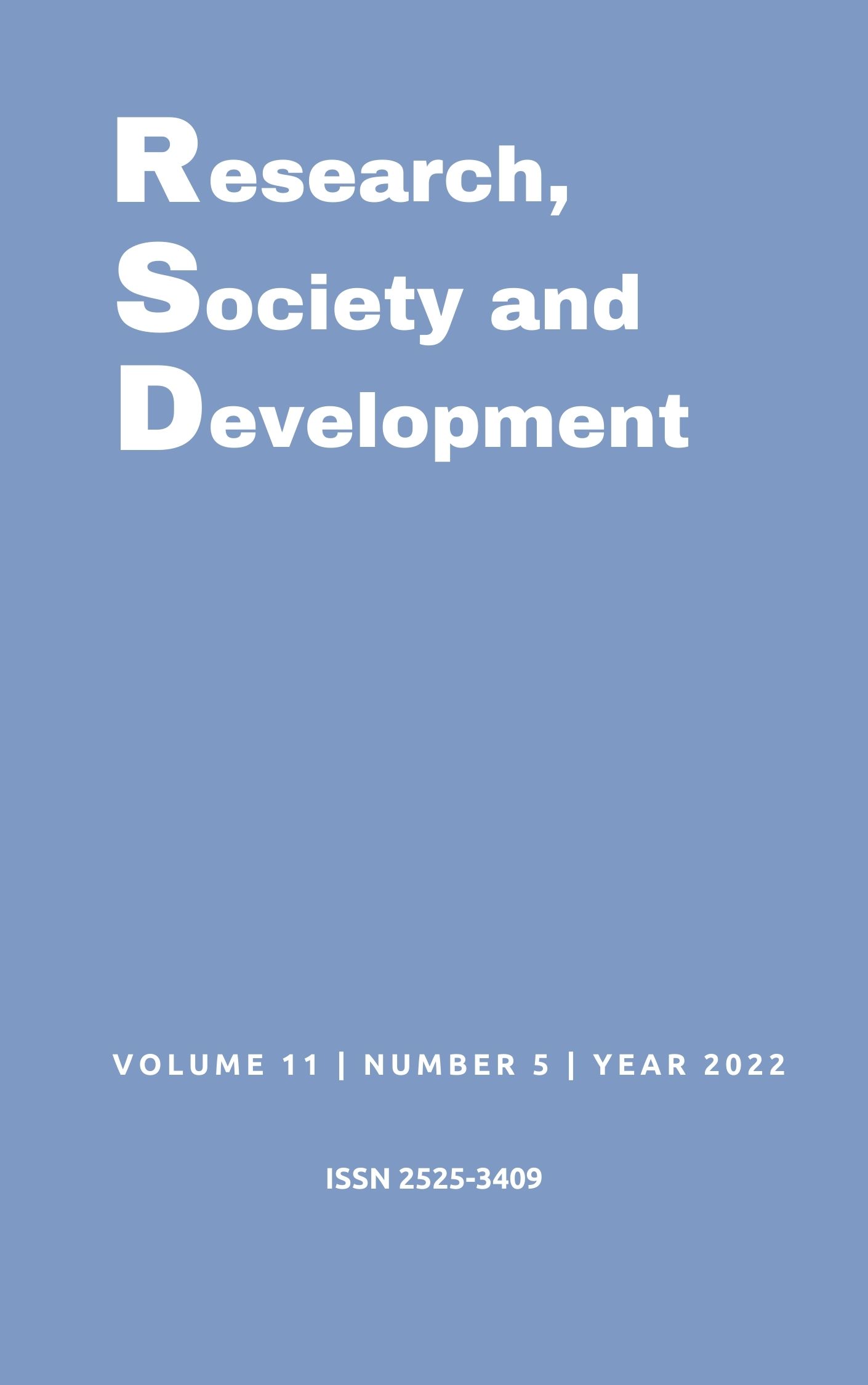Bibliometric study on carbon footprint in aquaculture
DOI:
https://doi.org/10.33448/rsd-v11i5.27717Keywords:
Carbon Neutralization; Sustainability of the Production Process; VoSViewer.Abstract
Carbon footprint is the term that identifies the amount of carbon in the atmosphere emitted by individuals, companies or any type of activity, such as agricultural production. Production chains increasingly need research and actions to mitigate the damage caused to the environment by the emission of greenhouse gases, such as research and actions to adopt methods that sequester these gases from the atmosphere to achieve carbon neutrality. The objective of the article was to carry out a bibliometric study on scientific production, in international journals from the Scopus base, to visualize the trend of research on the topic of carbon footprint and sustainability applied to aquaculture. Research methodology is quantitative, the terms carbon footprint, sustainability and aquaculture were searched in the SCOPUS article base. Research results showed 631 articles, the first article dated 2009 and showed a growing scientific interest in the subject. The conclusion of the study points to the importance of studying solutions to achieve sustainable aquaculture.
References
Allsopp, M., Santillo, D & Dorey, C (2013). Sustainability in Aquaculture: Present Problems and Sustainable Solutions. In: A. Chircop, S. Coffen-Smout & A. McConnell (Eds), Ocean Yearbook 27, Sponsored by the International Oceans Institute and the Marine Environmental Law Institute of Dalhousie University, Publ. Martinus Nijhoff Publishers.
Barros, A. J. S. & Lehfeld, N. A. S. (2007). Fundamentos de metodologia científica. Ed. Pearson Prentice Hall
Deutsche Welle Brasil. Desmatamento impulsiona emissões de CO2 no Brasil em 2020. (2021). Available in: https://www.dw.com/pt-br/desmatamento-impulsiona-emiss%C3%B5es-de-co2-no-brasil-em-2020/a-59657521. Access on November 26, 2021.
Eler, M. N. & Millani, T. J. (2007). Métodos de estudos de sustentabilidade aplicados à aquicultura. Revista Brasileira de Zootecnia. 36. 33-44. jul. FapUNIFESP (SciELO).
FAO. (1995). Code of Conduct for Responsible Fisheries. Rome, FAO. 41 p.
Ferreira, C. R. (2011). Pegada de Carbono: a relação entre mudanças climáticas e hábitos insustentáveis. Revista Geográfica de América Central. 2. 1-16 Universidad Nacional Heredia, Costa Rica.
Galindro, B. M., Zanghelini, G. M. & Soares, S. R. (2019). Uso de técnicas de benchmarking para melhorar a comunicação na avaliação do ciclo de vida: uma revisão geral. Journal Of Cleaner Production. 213, 143-57.
Gil, A.C. (2020). Metodologia do ensino superior. 5 ed. São Paulo: Atlas, 2020.
Kimpara, J. M., Zajdband, A. D. & Valenti, W. C. (2012). Métodos para medir a sustentabilidade na aquicultura. Teresina: Embrapa Meio-Norte.
Limmios, E. A. M., Ghadouani, A., Schulizzi, S. G. M. & Mazzarol, T. (2009). Giving the consumer the choice: a methodology for product ecological footprint calculation. Ecological Economics.68(10). 2525-2534.
Paul, J. & Criado, A. R. (2020). A arte de escrever resenha de literatura: o que sabemos e o que precisamos saber? International Business Review. 29(4), 101717.
Radu, A. L., Scrieciu, M. A. & Caracota, D. M. (2013). Análise da pegada de carbono: rumo a um modelo de avaliação de projeto para a promoção do desenvolvimento sustentável. Procedia Economics and Finance. 6, 353-63.
Soares, S. C. & Signor, A. (2021). Água um bem de todos: interfaces desenvolvimento e sustentabilidade. Research, Society And Development. 10(9). 1-10.20 jul. 2021.
United Nations (2010). United Nations Organization. Declaration of the “UN Water” for the World Water Day.2010.
United Nations (2021). UN chief welcomes China-US pledge to cooperate on climate action. 2021. Available in: https://news.un.org/en/story/2021/11/1105512. Access on November 26, 2021.
Van Eck, N.J., & Waltman, L. (2010). Software survey: VOSviewer, a computer program for bibliometric mapping. Scientometrics, 84(2), 523–538.
Van Eck, N.J., & Waltman, L. (2014). Visualizing bibliometric networks. In Y. Ding, R. Rousseau, & D. Wolfram (Eds.), Measuring scholarly impact: Methods and practice. 285–320. Springer.
Valenti, W. C., Kimpara, J. M. & Preto, B. L. (2011). Measuring aquaculture sustainability. World Aquaculture. 42(3), 26-30.
Valenti, W. C., Kimpara, J. M., Preto, B. L. & Moraes-Valenti, P. (2018). Indicadores de sustentabilidade para avaliar sistemas de aquicultura. Indicadores Ecológicos. 88, 402-13.
Valenti, W. C., Barros, H. P., Moraes-Valenti, P., Bueno, G. W. & Cavalli, R. O. (2021). Aquaculture in Brazil: past, present and future. Aquaculture Reports. 19. 100611. Elsevier BV. http://dx.doi.org/10.1016/j.aqrep.2021.100611.
Downloads
Published
How to Cite
Issue
Section
License
Copyright (c) 2022 Olavo José Luiz Junior; Humberto Rodrigues Macedo; Eva Barros Miranda; Rafael Luis Bartz; Aldi Feiden

This work is licensed under a Creative Commons Attribution 4.0 International License.
Authors who publish with this journal agree to the following terms:
1) Authors retain copyright and grant the journal right of first publication with the work simultaneously licensed under a Creative Commons Attribution License that allows others to share the work with an acknowledgement of the work's authorship and initial publication in this journal.
2) Authors are able to enter into separate, additional contractual arrangements for the non-exclusive distribution of the journal's published version of the work (e.g., post it to an institutional repository or publish it in a book), with an acknowledgement of its initial publication in this journal.
3) Authors are permitted and encouraged to post their work online (e.g., in institutional repositories or on their website) prior to and during the submission process, as it can lead to productive exchanges, as well as earlier and greater citation of published work.

